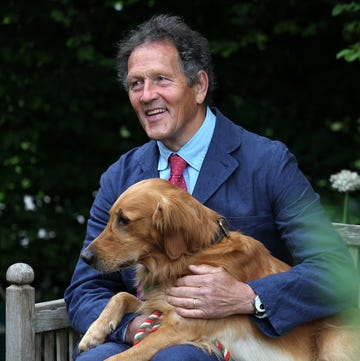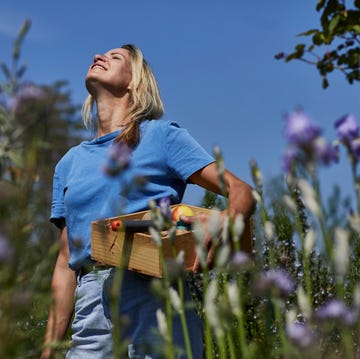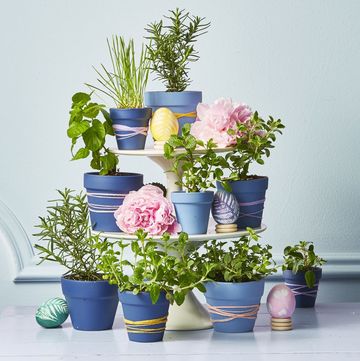I’ve always known I was adopted – that I was ‘special’, ‘chosen’. I never considered the idea that, to be eligible for choosing, someone else had to let me go; that my happiness now may have been part of someone else’s sadness then. A sadness, perhaps, that still lived on.
In fact, it wasn’t until I hit my 50s that I began to feel like there was something I needed to pay heed to. Something fractured yet fundamental. The amateur astronomer in me knew instinctively what it was. The James Webb Space Telescope is the most powerful ever built, but even it can’t peer back to the beginning of time. There’s a period – before light itself existed – that it can never see. It’s nothing and it’s everything. For me, that period is three and a half months. The time before my adoption – before I became me.
The sleuthing started with my birth certificate. Since the Children Act 1975, adopted children have been able to access documents that reveal their mother’s name, her address at the time and the child’s place of birth.
My partner, Stuart, and I spent a long weekend following these crumbs, scrolling through electoral rolls, ancestry sites and adoption forums until we narrowed our search to two women, both in Walney Island, off the west coast of England. One, we discovered, had died just three months earlier.
There we were, hunched over our dining table, witnessing a life played out over a series of open tabs on a laptop: a little pebbledashed terraced house we’d tracked down on Google Maps; a marriage ended within five years; no other children; dead at 70. I felt robbed of something I’d never had – a woman I’d never met.
Something deep and instinctive fired up inside me. I’d wasted too much time. We’d already established the current address of our only other possible candidate. Perfect, I thought. I’ll drive right up to her front door, take some forecourt flowers and put on my best Harris Tweed jacket. ‘Hello, are you my mother?’ Cue rousing string section. Cut back to Davina in the studio.
Kleenex and applause. Roll credits.
‘Do you think that’s a good idea?’ faltered a friend when I told her. ‘It would be a huge shock. Why don’t you send her a lovely letter?’ So I did. I enclosed a photo of me tucking into a smörgåsbord on a Swedish ferry, gave her my email and breezily suggested coffee, halfway? Preston station? As if I was casting around for a live version of Brief Encounter: ‘Thank you for coming back to me.’
What I wanted to convey was: it’s all okay. I’m happy and well. Hasn’t everything turned out just great?
Her email arrived the next morning. She can’t have written it more than an hour after my letter had arrived.
‘I am the person you’ve been trying to find,’ it began. No ‘Dear’. No ‘David’. No ‘Mother’.
‘To say your letter was a shock to me is an understatement. I’m glad that you’re happy. I know this may not be the response you’re looking for, but please do not contact me again. I’m sorry.’
I grabbed my coat and car keys, and texted Stuart: ‘Going to Walney today. I’ll call you later.’
Near Vickerstown, Walney’s main settlement, I drove past the house named on my birth certificate. A pushchair was propped up outside. In another life, I might have taken my first steps in its tidy garden, I thought.
Then, around a corner, a woman was standing on a verge with a dog. She nodded at me as I slowed down and waited for her to cross. It was her. My mother. I checked my satnav. Her house was just on the other side of the road. She had my eyes. She even walked like me – too fast, Stuart says.
For a second, I considered opening my car door and asking something inane like, ‘Is this the way to the bird hide?’ Perhaps she would recognise me from the photo. Or, just maybe, she would see something of herself in my face, as I had just done in hers.
She walked up the gravel path to her front door and turned the handle. I waited a while longer, pretending to take a call. She turned and looked over at me for a second before closing the door behind her.
There it was. The end of the road for me. Time to head home. But driving west again, I spotted signs for Furness General Hospital and its maternity unit. Strange, I thought. I was born over an hour’s twisty drive away in Kendal. St Monica’s – I recalled the name from my birth certificate.
Later that night, I flipped open my laptop and punched in an update on the adoption forum I’d been using. ‘Birth mother told me to get lost,’ I wrote. ‘Shame, I was only doing this for her. And I found out I was born in a hospital an hour away from where she lives. That’s odd. Oh, well.’
A week later, I discovered further clues locked up in a warehouse in Liverpool. They’d been sitting here, in my home city, waiting for me all along – but to find them, I’d had to engage an agency that helps adopted children.
Jean, one of the counsellors, explained that when I was adopted, no one imagined these documents would ever reach me. ‘This whole process was designed to be irreversible in both directions. We’re living in completely different times now, thank God,’ she said, as she left me alone in the room.
The first document I picked up was a copy of the correspondence from the adoption agency to my mum and dad. ‘We’re writing to let you know that we have a baby we think you might be interested in…’ it said, like a prize draw letter from Reader’s Digest: ‘Congratulations! You’ve been specially selected for the chance to win a baby boy, or one of 25 runners-up prizes of a Breville sandwich maker.’ Then came reports from social workers, a stack of serious-looking court orders, gynaecology reports, an adoption support plan… I was about to shut the box when I spotted a handwritten note: ‘I now know that my baby would have a better start in life in a loving home,’ it read. ‘I consent to the adoption with full understanding of what is involved.’
There it was. That one small word: now. It shone out like a supernova amid the recommendations from the adoption committee and lawyers. For my birth mother, it signified there was a before and after. Something had made her change her mind.
I was still wading through my birth records when my phone lit up later that evening. It was a message from someone who’d read my post on the forum.
‘It’s sad that you don’t know your mother’s side of the story. I was at St Monica’s, too. I didn’t know her, but I think I know why she found it impossible to see you.’ My heart started to race. ‘These things are always better over a nice cup of tea,’ typed this stranger called Sarah. ‘Why don’t you pop up for lunch?’
At her home in Melrose, in the Scottish Borders, we settled by the fireside. ‘You’re the first baby from that place I’ve ever seen,’ she said, wiping her eyes.
St Monica’s Maternity Home, I learned, was a Church-run institution for unmarried mothers, staffed by nuns. There was no professional medical supervision of any kind.
‘When we arrived at the home, our personal belongings were taken from us,’ said Sarah. ‘We were given a new name – a saint’s name – so immediately, we lost our identity.’ Girls came from the south of England, Wales and even the Republic of Ireland. ‘The further, the better,’ she says. ‘No family wanted to risk anyone finding out.’
One family, Sarah remembered, paid a hotel in the south of France to send postcards home, telling their other children that they were from their sister, happily working a summer job in the sun. ‘We were a shameful, dirty secret, and St Monica’s was our punishment,’ she explained.
‘We worked from first thing in the morning until late at night. We’d be lifting huge, heavy pans of scalding water up and down the stairs all day when we were eight months pregnant. I can still remember the bone-numbing cold of the place.’
Then came their childbirth: ‘If there was anything wrong, we weren’t told. I remember one girl screaming that her premature daughter needed medical attention, but they never listened.’
Before it was forced to close in 1970, around 45 children died there. No one knows the real number – the home didn’t keep accurate records. There’s a mass grave in Kendal – a touchstone to something unutterable in our recent past.
For other new mothers, the cruellest punishment was reserved for feeding time. ‘We sat around in a semicircle, perched awkwardly on small, hard stools, feeding our babies,’ Sarah told me. ‘We were told not to make eye contact with the baby. Instead, we had to recite prayers. Everything was carefully arranged to make the experience as uncomfortable and unnatural as possible.’ She paused. ‘It worked. We just wanted it to end.’
Some women who stayed at St Monica’s, Sarah told me, have since died by suicide. Many others, she explained, are living with profound psychological scars that have shadowed their entire lives – manifesting in depression, anxiety and a deep sense of shame.
‘You were one of the lucky ones,’ Sarah said. ‘But my guess is that your mother wasn’t. Please don’t think she was hard, cold and indifferent. She was 17. She was a baby herself. If you were to get through it, you had to be strong. Once you started to hang your head, you were lost.’
I recalled my mother’s email and it was like I was reading it for the first time: ‘I know this may not be the response you’re looking for, but please do not contact me again. I’m sorry.’
My eyes started to water. I’d thought this search would be like snapping together a jigsaw; a comb through public records, a snoop on her social media and – hey, presto! But that hadn’t revealed my mother. To really find her, I’d had to start at the very beginning.
Only now was I beginning to understand the need for these mothers – my mother – to cut off the raw emotional pain of their experience for fear of drowning in it. There’s no neat resolution to this story. My hoped-for reunion may never happen. But Sarah was right: I’m one of the lucky ones. Since my adoption, I’ve only known love, acceptance and belonging. And, if I’m honest, I wouldn’t want things to have played out any differently.
I have to reconcile all of this with the dark origins of my story – of what happened at St Monica’s all those years ago. We all do. The babies, the mothers, the Church – and the neighbours, family and support workers who found it easier to look away.
The repercussions of the institutional failure that took place at St Monica’s, and places like it, connect us in ways both painful and profound. In searching for my beginning, I’ve found something else: a responsibility to bear witness, to acknowledge truths long buried and perhaps, in doing so, to begin the long journey toward a deeper kind of healing.














